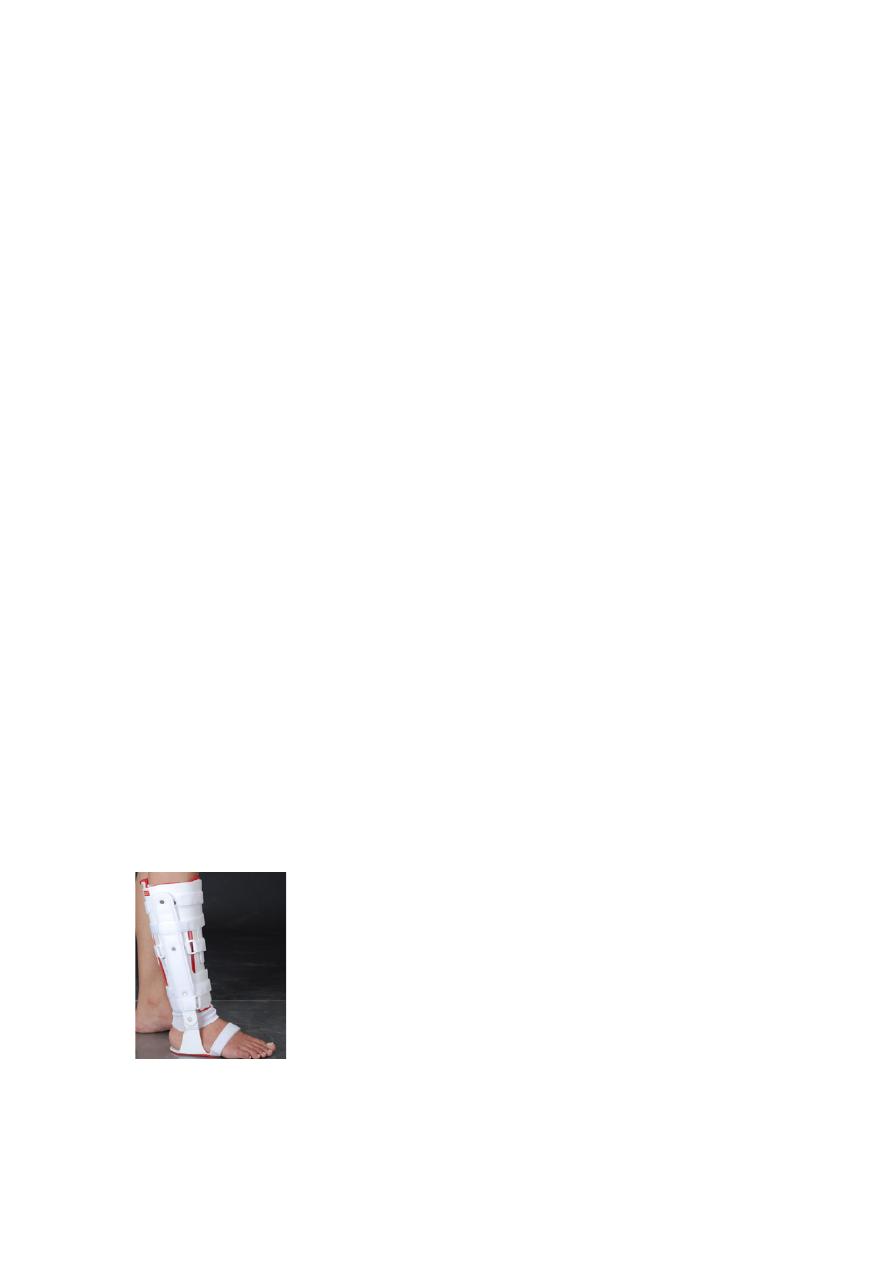
Complication of p.o.p :
1- tight cast lead to vascular compression and
compartment syndrome if this happen then the cast either removed
or splitted longitudinally along it's length and open all the layers and
cotton tell reach the skin .
2- if the padding is thin , pressure sores can occur over the boney
prominence .
3- skin abrasion or laceration occur due to direct contact of the skin
with the p.o.p .
4- loose cast : occur after swelling subside ; loose cast should be
replaced .
Functional bracing :
Using either p.o.p or one of the lighter material in order to preventing joint stiffness while still
permitting fracture splintage and loading .
The brace is applied when the fracture is beginning to unite i.e. after
3-6 weeks of cast splintage or traction e .g of functional cast is Sarmiento functional cast .
Internal fixation
:
e.g. of internal fixation are screws, k.wire , plate and screws ,
intramedullary nail (with or without locking screws) , dynamic hip screw , pin and plate ,
fixed angle plate ……..etc .
It is very good way of holding of the fracture , it facilitate early movement of the limb so it
will help in decrease the stiffness of the joints or avoid it .
Internal fixators used usually in simple (closed) fractures .

Indication of internal fixation :
1- fracture need open reduction .
2- fractures that can be reduced closely but they are unstable .
3- fractures that are unite poorly and slowly .
4- pathological fractures .
5- in patients with multiple fractures .
6- fractures in patients who present nursing difficulties e.g. paraplegic
patient .
Complication of internal fixation :
1- infection .
2- implant failure .
3- non union .
4- refracture .
External fixation :
U
Indication
U
:
1- compound fracture (fracture with soft tissue damage and open
wound ) .
2- infected fracture .
3- fractures associated with vessels or nerves damage .
4- sever comminuted fractures .
5- in pelvic fracture .
6- in bone lengthening .
7-in sever multiple injuries in which early stabilization reduce the risk of
serious complications .
Complication of external fixation :
1- damage to the soft tissue structures .
2- pin – tract infection .

Compound fracture : ( open fracture )
It is fracture associated with wound connecting it to the external environment .
Classification of the compound fracture :
Gustilo`s classification : depend on the size of the wound .
Type one : the wound is small about one cm. .
Type two : the wound is (1 – 5) cm no much soft tissue damage .
Type three : A – extensive soft tissue damage and loss, but there is sufficient
soft tissue to cover the bone .
B – sever soft tissue loss and damage and there is no
sufficient soft tissue to cover the exposed bone .
C – if there is arterial injury which need to be repaired
regardless of the amount of other soft tissue damage .
Treatment of compound fracture :
Initial management :
Look for the vital signs and injuries to other organs which are life threatening e. g shock , air
way obstruction , signs of internal bleeding …….etc .
Tetanus prophylaxis is administered ; toxoid for those previously immunized , and human anti
serum for non immunized patients .
We should cover the wound by sterile wet dressing as we receive the patient .
Principles of treatment of compound fracture :
All open fracture regarded as contaminated , and it is very important to prevent them from
becoming infected i.e. the aim is to change the compound fracture to simple (closed) fracture
by wound care .
U
Wound care in compound fracture
U
: under GA .
1- washing the wound by copious amount of normal saline .
2- tourniquet should not be used .
3- wound excision (debridment) remove all the foreign material and all
the dead tissue .
4- if there is nerve or tendon cut , they should be marked and leave

them for delayed primary suture ; but if the wound is clean then they
can be sutured immediately .
5- stabilization of the fracture by p.o.p or external fixator .
6- stop the bleeding by good haemostasis .
7- wound closure : in general it is not advisable to close the wound in
compound fracture at the time of admission ; it should be left open
for few days covered by simple dressing .
then if become clean , close it by delayed primary suture ; if there is skin loss then skin
graft or flaps can be done . If there is bone loss then bone grafting .
8- antibiotic prophylaxis given i.v. We should never forget the
possibility of gas gangrene especially if there is a lot of crushed
muscle , so give benzyl penicillin , flucloxacilline or second
generation cephalosporin and metronidazole (flagyl).
if infection is controlled then the possibility of union will be good ,
but if infection take long time to be controlled then there will be high
possibility of delayed union or even non union .
